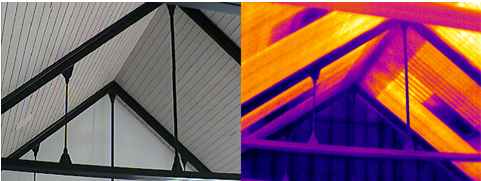To anticipate it right away: You won’t get cold feet with ceiling heating! This is because – like all surface heating systems – it uses radiant heat. The warmth does not arise at the top of the ceiling and remains there. Rather, the radiation translates the heat into electromagnetic waves. If these hit the furniture, people and other objects in the room, starting from the ceiling, they are heated. In addition, these in turn give off the heat to the environment, i.e. they become a radiator themselves. The result is an even distribution of heat in the room. Since the radiant heat is very similar to the rays of the sun, we humans find it particularly pleasant and comfortable. And this although the actual room temperature can be two to three degrees lower than with conventional radiators.


